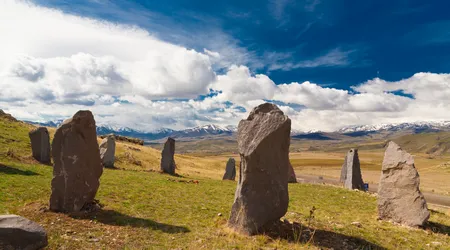Ancient Astronomical Observatories Lost to Time

Ancient astronomical observatories lost to time whisper tales of humanity’s quest to decode the cosmos.
Anúncios
Long before telescopes, our ancestors built sophisticated structures to track stars, predict seasons, and weave celestial patterns into their cultures.
These sites, often reduced to ruins or forgotten entirely, were humanity’s first steps toward understanding the universe.
From Egypt’s deserts to Macedonia’s mountains, these observatories shaped civilizations. This article dives into their hidden stories, revealing their ingenuity, cultural significance, and enduring mysteries. Why did these marvels vanish, and what can they still teach us?
The night sky has always been a canvas of wonder, sparking curiosity and reverence. These ancient sites weren’t just scientific tools; they were sacred spaces where priests, scholars, and farmers aligned earthly life with cosmic rhythms.
Anúncios
Exploring ancient astronomical observatories lost to time unveils a profound connection between humanity and the stars, urging us to rediscover their legacy.
The Ingenuity of Ancient Stargazers
Humanity’s fascination with the sky birthed remarkable structures. Ancient astronomical observatories lost to time, like Egypt’s Temple of Buto, showcased advanced engineering.
Unearthed in 2024, this 2,500-year-old observatory used a 16-foot limestone sundial to measure solar movements, aiding religious and agricultural planning.
Precision defined these early astronomers. Without modern tools, they tracked celestial bodies with startling accuracy, using shadows and stone alignments. ]
++ The Hidden Influence of Nomadic Tribes on Modern Civilization
Their observations shaped calendars, ensuring successful harvests. The Temple of Buto’s mud-brick design, with its east-facing entrance, captured sunrise for precise measurements.
This ingenuity wasn’t limited to Egypt. Across continents, cultures devised unique methods to map the heavens.
Their tools, though simple, rivaled modern precision, proving that human curiosity transcends technological limits. These observatories were humanity’s first universities of the stars.

Cultural and Spiritual Significance
The stars were more than scientific subjects; they were divine. Ancient astronomical observatories lost to time often doubled as sacred sites.
At Chaco Canyon, New Mexico, the Pueblo people aligned pueblos with solstices, linking rituals to cosmic cycles.
These observatories wove astronomy into cultural identity. Myths and folklore turned constellations into stories, passed down through generations.
The stars guided not just navigation but spiritual beliefs, with gods like Osiris etched into observatory walls.
Also read: The Forgotten Kingdoms of South Americ
Communities relied on these sites for survival. Accurate calendars meant timely planting, while celestial alignments marked religious festivals.
The observatories were cultural anchors, blending science, spirituality, and daily life into a cosmic tapestry.
Consider the Goseck Circle in Germany, a Neolithic site from 5000 BCE. Its pits tracked lunar phases, guiding agricultural and ritual timing. Such sites show how deeply the cosmos shaped ancient worldviews, far beyond mere observation.
Remarkable Examples of Lost Observatories
The Kokino Observatory in North Macedonia, built around 1900 BCE, is a marvel. Stone markers tracked solstices and lunar cycles, aligning harvests with celestial events. Its thrones linked rulers to the sun god, blending power and astronomy.
In Uzbekistan, Ulugh Beg’s observatory, nearly 5,000 years old, mapped stars with precision. Its ruins reveal a sextant-like structure, showcasing Islamic scholars’ contributions to astronomy. These sites, though faded, highlight global astronomical heritage.
Ancient astronomical observatories lost to time like Armenia’s Zorats Karer, dubbed “Armenian Stonehenge,” used pierced menhirs to track stars. Dating back 7,500 years, it underscores humanity’s long-standing celestial obsession, now largely forgotten.
Read more: Ancient Cultures That Practiced Brain Surgery
The Radkan Tower in Iran, engineered by Nasir al-Din Tusi, predicted seasons with architectural brilliance. Its design rivaled later telescopes, yet its story remains obscure, buried under centuries of neglect and rediscovery.
Why These Observatories Vanished
Political upheaval often erased these sites. Egypt’s Temple of Buto, built during a turbulent era, succumbed to invasions and neglect. Ancient astronomical observatories lost to time faded as empires fell, their purposes misunderstood by successors.
Environmental factors played a role. Harsh climates buried sites like Goseck Circle under soil, while others, like Kokino, were abandoned as communities shifted. Nature reclaimed what humans forgot, hiding these treasures from history.
Cultural shifts also contributed. As new religions or technologies emerged, ancient practices waned. Observatories, once central to life, became relics, their stones repurposed or left to crumble, their knowledge lost to time.
The Nebra Sky Disc, found in Germany, illustrates this loss. Buried around 1600 BCE, it mapped celestial phenomena but was forgotten for millennia.
Its rediscovery in 1999 revealed a sophisticated lunisolar calendar, hinting at what else lies hidden.
Rediscovering the Lost Observatories
Archaeoastronomy, born from studying sites like Stonehenge, revives these lost legacies. Modern excavations, like Buto’s in 2024, uncover tools and artworks that decode ancient skies. Ancient astronomical observatories lost to time are slowly resurfacing.
Technology aids rediscovery. Satellite imaging and ground-penetrating radar reveal buried structures, while digital reconstructions model their functions. These tools bridge past and present, illuminating how ancients charted the cosmos.
Yet, challenges remain. Many sites are threatened by urban sprawl or looting. Preserving them requires global effort, as their loss would erase irreplaceable insights into our shared history.
For example, imagine a farmer in ancient Macedonia using Kokino’s markers to time planting. This practical connection to the stars mirrors modern GPS, showing timeless human ingenuity.
The Legacy of Ancient Astronomy

These observatories laid the foundation for modern astronomy. Their star charts and calendars influenced Copernicus and Galileo, shaping the scientific revolution. Ancient astronomical observatories lost to time still echo in today’s telescopes.
A 2023 study estimated 20% of known ancient observatories remain unexcavated, holding untapped knowledge. This statistic underscores the urgency of preserving these sites before they’re lost forever.
Their legacy transcends science. By aligning life with the cosmos, ancients taught us to look upward, fostering curiosity that drives modern space exploration. Their spirit lives in every starry-eyed dreamer.
Picture a modern astronomer peering through a telescope, much like an ancient priest at Chaco Canyon. This analogy connects past and present, showing humanity’s enduring quest to understand the universe.
Modern Implications and Lessons
What can ancient astronomical observatories lost to time teach us today? Their blend of science and culture inspires interdisciplinary approaches, merging astronomy with anthropology to enrich our understanding.
These sites remind us of human resilience. Despite limited tools, ancients achieved precision we still admire. Their methods encourage sustainable practices, like using natural alignments instead of energy-intensive technology.
Protecting these sites is crucial. They’re not just relics but lessons in humility, showing how much we owe to those who first mapped the stars. Their rediscovery fuels our cosmic curiosity.
Table: Notable Ancient Astronomical Observatories
| Site | Location | Age | Key Feature |
|---|---|---|---|
| Temple of Buto | Egypt | 2,500 years | Limestone sundial for solar tracking |
| Kokino Observatory | North Macedonia | 3,900 years | Stone markers for solstices |
| Ulugh Beg Observatory | Uzbekistan | 5,000 years | Sextant-like structure for star mapping |
| Goseck Circle | Germany | 7,000 years | Pits tracking lunar phases |
| Zorats Karer | Armenia | 7,500 years | Pierced menhirs for star observation |
Conclusion
Ancient astronomical observatories lost to time are more than ruins; they’re testaments to human ingenuity and cosmic wonder.
From Egypt’s Temple of Buto to Armenia’s Zorats Karer, these sites reveal how our ancestors wove the stars into their lives.
Their rediscovery in 2025, aided by archaeoastronomy and technology, rekindles our connection to the past. What secrets still lie buried, waiting to deepen our understanding of the universe?
These observatories remind us that curiosity is timeless. They challenge us to protect our heritage and keep gazing upward, seeking answers in the stars.
Let’s honor their legacy by preserving these celestial bridges to our past, ensuring their stories endure for future generations.
Frequently Asked Questions
What defined ancient astronomical observatories?
They were structures designed to track celestial bodies, using stones, shadows, or alignments to create calendars and guide rituals.
Why were these observatories lost?
Political upheaval, environmental changes, and cultural shifts caused abandonment, with many sites buried or repurposed over time.
How accurate were ancient observations?
Remarkably precise. For example, Kokino’s markers predicted solstices within days, rivaling modern calculations without advanced tools.
What’s the oldest known observatory?
Zorats Karer in Armenia, dating back 7,500 years, is among the oldest, using menhirs to track stars.
How can we protect these sites today?
Global efforts, including UNESCO designations and advanced imaging, help preserve and rediscover these irreplaceable historical treasures.
